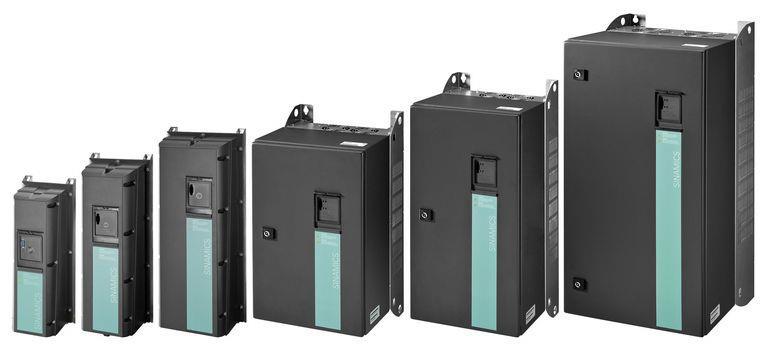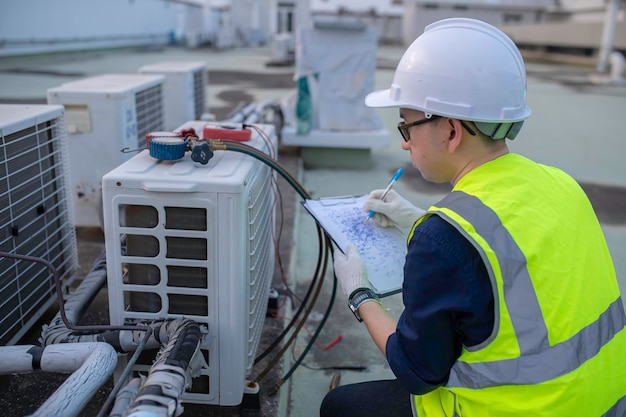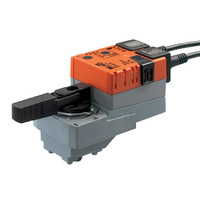What is a Variable Speed Drive? A Beginner’s Guide to Understanding VSDs
A Variable Speed Drive (VSD) is a vital tool for optimising the operation of electric motors across a wide range of industrial applications. These systems deliver precise speed control, ensuring electric motors run at their most efficient speed to meet specific load requirements. By enabling advanced motor control, variable speed drives reduce energy consumption, extend the life of mechanical equipment, and minimise operating costs.
Whether you're exploring what is a variable speed drive or looking to enhance energy efficiency, understanding the role of variable frequency drives (VFDs) is crucial for optimising operations.

What is a Variable Speed Drive?
A Variable Speed Drive is an electronic device that regulates the motor's speed by modifying the input voltage and frequency supplied to the motor. This ability to tailor motor performance ensures efficient operation at full speed, reduced speeds, or anywhere in between.
How Does a Variable Speed Drive Work?
Variable frequency drives adjust the output voltage and frequency, enabling motors to meet changing demands without unnecessary energy use. Components like pulse width modulation (PWM) and voltage source inverters are key in achieving this accurate control.
For instance, in pump and fan applications, a variable speed drive pump reduces waste by ensuring the motor load matches the system's requirements, delivering optimal energy savings.
Why Use Variable Speed Drives?
Addressing Fixed Speed Challenges
Traditional motors operate at a constant speed, consuming the same amount of energy regardless of the task's actual demands. This often leads to unnecessary electricity consumption and higher energy costs.
The Benefits of Speed Adjustment
A variable frequency drive (VFD) enables motors to adjust their speed based on the load, delivering:
- Significant energy savings.
- Reduced mechanical stress and wear on components.
- Enhanced flexibility for systems where the system requires frequent braking or variable loads.
By installing variable speed drives, industries can achieve greater efficiency and reduce electricity consumption across operations.
Types of Variable Speed Drives
Choosing the right speed drive is essential to meet specific operational needs. Several types of variable speed drives are designed to support various industrial applications.
AC Drives
AC drives are used with ac motors, including ac induction motors and synchronous motors. These drives adjust the output frequency and input voltage, making them ideal for applications requiring continuous operation, such as HVAC systems and manufacturing lines.
DC Drives
A dc motor variable speed drive is suitable for tasks requiring constant torque, such as conveyor belts or other heavy machinery. By regulating the dc voltage, these drives ensure reliable and efficient motor control.
Adjustable Frequency Drives
Also called variable frequency drives, these devices are versatile, capable of handling both light and heavy loads. They optimise electric motors in pump and fan applications, using power electronics to achieve precise speed control and reduce electricity consumption.
Benefits of Using Variable Speed Drives
Energy Efficiency
Variable speed drives dynamically adjust the motor's speed to match demand, significantly reducing energy consumption. This capability is particularly valuable in systems with fluctuating loads.
Cost Savings
Lower electricity consumption leads to reduced operating costs, helping industries save money while maintaining optimal performance.
Extended Equipment Lifespan
By minimising mechanical stress and electrical stress, variable speed drives prolong the life of mechanical equipment, reducing maintenance needs and downtime.
How Variable Speed Drive Motor Works in Industrial Settings
Practical Applications of VSDs
Variable speed drives are used in a range of industries to improve efficiency:
- HVAC Systems: AC drives manage airflow by controlling ac motors, ensuring energy-efficient heating and cooling.
- Manufacturing Lines: Synchronised motor controllers maintain seamless operations with precise speed control.
- Renewable Energy Systems: Medium voltage AC drives stabilise output in wind and solar power plants, minimising energy fluctuations.
Components of a Variable Speed Drive
- Voltage Source Inverter: Converts power to the required output voltage and frequency.
- Pulse Width Modulation (PWM): Provides fine-tuned motor speed control.
- Dynamic Braking: Ensures safe deceleration in systems where the system requires frequent braking.
By managing input voltage and output frequency, variable speed drives enhance the efficiency of electric motors, even in challenging conditions.
Selecting the Right Variable Speed Drive
When choosing a variable speed drive, assess the following:
- Motor Type: Ensure compatibility with your ac motor or dc motor.
- Application Needs: Determine if the drive supports pump and fan applications or heavy-duty mechanical loads.
- Energy Savings Goals: Use tools to estimate energy savings and prioritise
Future of Variable Speed Drives
The next generation of variable speed drives focuses on sustainability and automation. Key advancements include:
- IoT Integration: Enables real-time tracking of motor load, operating speed, and energy use.
- AI-Driven Systems: Automatically optimise performance for maximum energy efficiency.
- Eco-Friendly Designs: Incorporate renewable energy solutions to minimise the carbon footprint.

Conclusion
Optimise your energy efficiency and reduce costs with the right variable speed drive. At Controls Traders, we provide expert advice to help you select the best solution for your specific industrial applications, whether you’re managing pump and fan applications, manufacturing systems, or renewable energy systems.
Visit Controls Traders for expert advice and tailored solutions to enhance your industrial systems.
Frequently Asked Questions
What is a Variable Speed Drive and why is it used?
A Variable Speed Drive adjusts motor speed to reduce energy consumption and optimise efficiency in industrial applications.
How do Variable Speed Drives save energy in industrial applications?
They match the motor’s speed to the required load, ensuring operations are performed at the most efficient speed.
What are the differences between AC and DC Variable Speed Drives?
AC drives control ac motors with variable loads, while DC drives provide steady torque for dc motors.
What should I consider when selecting a Variable Speed Drive for my facility?
Focus on compatibility with the motor type, specific application needs, and potential energy savings.
What are the common issues faced when using a Variable Speed Drive and how can they be resolved?
Common problems, such as overheating, are often due to incorrect settings. Regular maintenance resolves these issues.
Leave a comment
Popular Posts

Belimo vs. Siemens Actuators: Comparison & Buying Guide

What Is A Solenoid Valve?

How Does a Belimo Actuator Work?





























